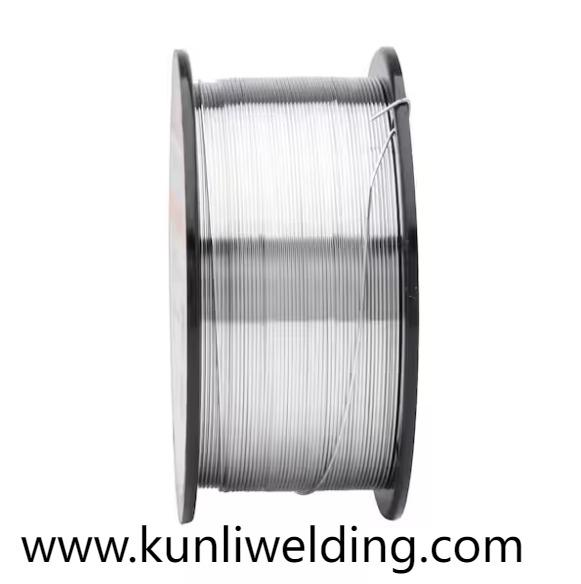-
أخر الأخبار
- استكشف
-
الصفحات
-
المجموعات
-
المدونات
-
المنتديات
Ensuring Flight Safety with Reliable Aluminum TIG Wire Solutions

Field-replaceable cartridges simplify upkeep, ensuring that surge defense remains optimal without extensive downtime or specialized tools.Amid headlines spotlighting commercial space ventures and next generation electric aircraft, many fabrication engineers turn to Aluminum Tig Wire Suppliers for guidance on critical welding tasks. In aerospace structures where weight reduction and structural integrity go hand in hand, the choice of TIG wire influences everything from fuselage panels to fuel tank assemblies. As demands rise for porosity free welds and precise metallurgical bonds, supplier expertise becomes pivotal in ensuring safe and reliable flight hardware.
Aerospace welding often involves thin gauge aluminum alloys that require tight control over heat input. Aluminum TIG wire feeds pure or alloyed filler material into the weld pool under an inert gas shield. This process demands wire that melts at consistent rates and resists contamination. When wires carry trace impurities or vary in diameter, arc stability suffers and defects such as blow through or lack of fusion can occur. High quality TIG wire helps maintain weld bead uniformity across critical joint geometries.
In recent industry news, electric vertical takeoff and landing vehicles and space tourism capsules are drawing attention to next generation airframes. These novel platforms rely on advanced aluminum alloys that balance tensile strength with corrosion resistance. ER4043 and ER5356 remain common filler choices, but emerging alloys tailored for specific alloy families are gaining traction. Suppliers who invest in metallurgical research provide welders with wire grades that match these new base metals, reducing trial and error on the shop floor.
Certification standards in aerospace welding are unforgiving. Welding operations require detailed documentation of filler metal lots, heat number traceability, and mill test reports. Reputable Aluminum Tig Wire Suppliers maintain rigorous quality control measures, from spectrographic analysis of alloy composition to diameter consistency audits using laser measurement. This level of transparency allows quality managers to archive every batch detail and comply with audit requirements for commercial aircraft and launch vehicle contractors.
Technical support extends beyond initial wire selection. Leading suppliers offer consultation on optimal weld parameters such as current range, torch angle, and travel speed. Remote troubleshooting via video calls and on site training programs guide welders through complex weld sequences on frame splice joints and bulkhead attachments. As welding automation expands in aerospace shops, suppliers also assist with robot programming to ensure wire feed mechanisms match arc dynamics for each filler alloy.
Supply chain resilience has become a hot topic in aerospace manufacturing. Disruptions in raw material availability can delay critical build schedules. Some TIG wire suppliers mitigate this risk by holding regional inventories and diversifying aluminum billet sources. Others partner with recycling centers to reclaim scrap and maintain wire production continuity. Fabricators working on high profile aircraft projects benefit from suppliers that communicate lead time forecasts and offer buffer stock options.
Sustainability initiatives in aerospace are not limited to fuel efficiency. The carbon footprint of manufacturing processes is under scrutiny. Aluminum TIG wire producers who adopt low emission extrusion methods and energy saving technologies align with broader environmental goals. By choosing suppliers that document energy used per spool and engage in circular economy practices, aerospace companies demonstrate commitment to responsible manufacturing in addition to operational excellence.
Collaborative development projects between wire suppliers and aerospace OEMs drive innovation in filler metallurgy. Joint trials test novel alloy blends for enhanced fatigue resistance in wing attachments and landing gear supports. These partnerships shorten development cycles by validating new filler candidates under simulated flight loads and environmental conditions. Fabricators gain early access to wire formulations that can unlock performance gains and support evolving design philosophies.
For aerospace welding teams seeking reliable TIG wire solutions, engaging with a supplier that blends metallurgical rigor, certification expertise, and responsive service is critical. Whether fabricating pressure vessels for launch systems or welding aluminum skins on electric aircraft, quality of filler wire directly impacts structural safety and production efficiency. To explore detailed product ranges, technical data, and support options, visit www.kunliwelding.com/product/ and connect with experts ready to support your next critical welding project.
- Art
- Causes
- Crafts
- Dance
- Drinks
- Film
- Fitness
- Food
- الألعاب
- Gardening
- Health
- الرئيسية
- Literature
- Music
- Networking
- أخرى
- Party
- Religion
- Shopping
- Sports
- Theater
- Wellness

